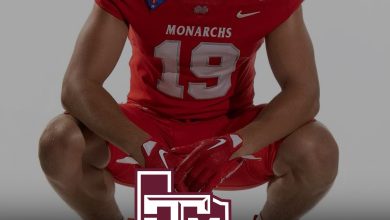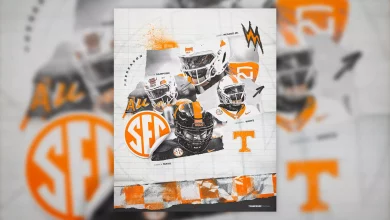WSJ report values With football programs worth over $800 million apiece, Alabama and Auburn are ranked #11, #12, and #12 overall.

In recent years, college football has become not only a staple of American culture but also a major economic powerhouse. As schools continue to grow their football programs, the financial ramifications are staggering, making college athletics more lucrative than ever. One such report that has caught the attention of sports fans and industry analysts alike was published by the Wall Street Journal (WSJ), which assessed the value of college football programs. According to the WSJ report, Alabama and Auburn—two of the most historic and successful football programs in the country—were valued at over $800 million each, ranking #11, #12, and #12 overall in the country. This ranking reflects the enormous impact that these programs have on their universities, athletic departments, and local economies, and underscores their lasting presence as powerhouses in the world of college football.
Let’s take a deeper look at the implications of the Wall Street Journal’s report, what the rankings mean for Alabama and Auburn, and how these values translate into success on the field and financial growth for the respective programs.
The Rise of Football Program Valuations
As college football has evolved over the decades, it has shifted from a regional activity to a multi-billion-dollar industry. From lucrative TV deals to stadium revenue, endorsements, and merchandise sales, the financial footprint of college football has expanded in tandem with the game’s popularity. The valuation of football programs such as Alabama and Auburn is indicative of a broader trend where schools are increasingly reliant on the revenue generated by their football teams to fund other athletic and academic initiatives.
The Wall Street Journal report on the valuation of college football programs takes into account multiple revenue streams, including:
- TV Deals: One of the largest sources of income for major college football programs comes from media rights deals, particularly those from major conferences like the Southeastern Conference (SEC) and the Big Ten. With the SEC negotiating enormous contracts with ESPN and other media companies, Alabama and Auburn benefit from broadcasting rights that help bring in hundreds of millions of dollars.
- Game-Day Revenues: Home games at iconic stadiums like Alabama’s Bryant-Denny Stadium and Auburn’s Jordan-Hare Stadium contribute significantly to their program’s overall value. Ticket sales, luxury boxes, concessions, and parking are all major components of the financial pie that contribute to a program’s worth.
- Merchandise and Licensing: Both Alabama and Auburn boast some of the most recognizable logos and brands in college sports. Their merchandise, from jerseys to hats and memorabilia, generates millions of dollars annually. Licensing deals further boost the financial value of these programs.
- Endorsements and Sponsorships: The widespread popularity of college football also means that programs are highly sought after by corporate sponsors. Both Alabama and Auburn sign high-value deals with national and regional companies to promote their brands and products. These sponsorships contribute significantly to the programs’ bottom lines.
- Postseason Revenue: Participating in major bowl games or the College Football Playoff (CFP) is a significant financial windfall for football programs. Alabama, in particular, has been a regular participant in the CFP, bringing in millions of dollars in postseason payouts.
Alabama Football: A Legacy of Success
When discussing the valuation of college football programs, Alabama’s prominence cannot be overstated. The Crimson Tide, led by legendary head coach Nick Saban, has been one of the most successful programs in NCAA football history, winning numerous national championships and producing a seemingly endless pipeline of NFL talent. The school has long been known for its football dominance, and that legacy has translated into significant financial success.
Historical Success and Its Impact
Alabama’s football program has not only been successful on the field but has also established a powerful brand that is known worldwide. Their dominance in the Southeastern Conference (SEC), their national championship pedigree, and their passionate fanbase have positioned Alabama as one of the most valuable football programs in the nation.
Under Nick Saban’s leadership, Alabama has become synonymous with winning, boasting multiple national titles and producing Heisman Trophy winners, first-round NFL draft picks, and All-Americans. This level of sustained success has led to an increase in demand for Alabama’s football games, merchandise, and recruitment efforts.
The financial value of the program is also impacted by the university’s ability to attract and retain elite talent. Alabama’s resources, facilities, and coaching staff allow the Crimson Tide to consistently recruit at the highest level, ensuring that the program remains competitive for years to come.
Alabama’s Financial Empire
The Wall Street Journal estimates that Alabama’s football program is worth over $800 million, reflecting the immense revenue it generates. From lucrative TV contracts, bowl game payouts, and merchandise sales to corporate sponsorships and licensing agreements, the financial impact of Alabama’s football program cannot be overstated.
Bryant-Denny Stadium, with a capacity of over 100,000 fans, is a massive revenue generator for the program. With each home game, the Crimson Tide rake in millions from ticket sales, luxury suites, parking, and concessions. The allure of Alabama football is undeniable, and this is reflected in the program’s valuation.
In addition to its financial power, Alabama’s football program is a key part of the university’s broader athletic success. The revenues generated by the football program support other sports and academic initiatives at the school, making the program an integral part of the university’s overall financial ecosystem.
Auburn Football: The Fierce Rival
While Alabama’s football program has long been the gold standard in the SEC, Auburn has carved out its own legacy as a fierce and competitive rival. The Tigers, led by their passionate fanbase and storied history, have consistently competed at a high level in the SEC and national rankings. Though Auburn has not won as many national championships as Alabama, its football program is still one of the most valuable in the country.
Competing with Alabama’s Shadow
Auburn’s success, both on and off the field, can be traced to the program’s rich history, which includes multiple SEC championships and appearances in major bowl games. Auburn’s consistent competitiveness within the SEC, particularly in the Iron Bowl rivalry with Alabama, ensures that their football program remains in the national spotlight.
While Alabama is considered one of the perennial powerhouses of college football, Auburn is no stranger to big moments. The Tigers’ national championship victory in 2010, their historic 2013 Iron Bowl victory, and their regular appearances in top-tier bowl games have solidified their place as one of the most valuable programs in the country.
Auburn’s football program is known for its passionate fanbase, which contributes to the program’s financial success. Jordan-Hare Stadium, which seats over 87,000 fans, is a major revenue driver for the school. Game-day revenues, along with substantial TV deals and sponsorships, contribute to Auburn’s football program’s financial valuation of over $800 million.
Auburn’s Financial Clout
Similar to Alabama, Auburn benefits from lucrative media rights deals, postseason revenues, and sponsorship opportunities. The financial value of the program reflects the school’s ability to generate revenue through multiple channels, including ticket sales, merchandise, licensing, and corporate partnerships.
Though Auburn’s program may not consistently reach the heights of Alabama’s dynasty, it remains a top-tier program with significant financial worth. The school’s competitive spirit and ability to attract top-tier talent, including highly sought-after recruits, ensure that the Auburn Tigers will remain a force in college football.
The Iron Bowl: A Rivalry that Elevates Both Programs
Perhaps the most compelling aspect of Alabama and Auburn’s football programs is the historic rivalry known as the Iron Bowl. Played annually, the Iron Bowl is one of the most highly anticipated college football games in the country, drawing millions of viewers and generating substantial revenue for both programs.
The financial impact of the Iron Bowl is massive. The game’s high-profile nature attracts national sponsors, fills stadiums, and generates immense media rights revenue. The two teams, separated by only 120 miles in the state of Alabama, have created an atmosphere where college football’s highest stakes are on the line each year. The energy surrounding the Iron Bowl has bolstered both Alabama and Auburn’s financial positions, contributing to their $800 million valuations.
The Broader Impact on the Universities and Their Communities
While the football programs at Alabama and Auburn are extremely profitable, their financial impact extends beyond the stadium. The success of the football teams plays a crucial role in attracting prospective students, alumni donations, and local investments in the surrounding communities. College football at both Alabama and Auburn serves as an economic engine that provides jobs, supports local businesses, and creates a sense of pride for both cities.
Additionally, the revenue generated by the football programs supports other university initiatives, including scholarships, academic research, and student-athlete development. The success of the football programs strengthens the athletic departments as a whole, allowing the schools to reinvest in their facilities and other sports programs.









